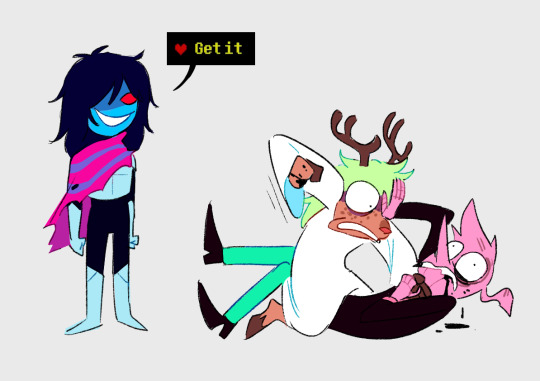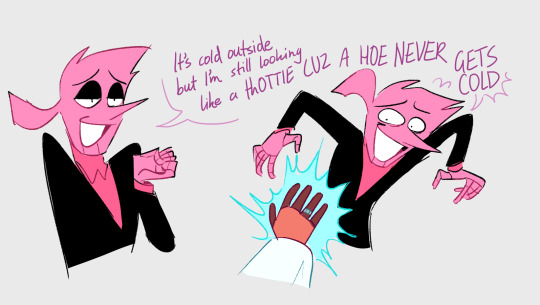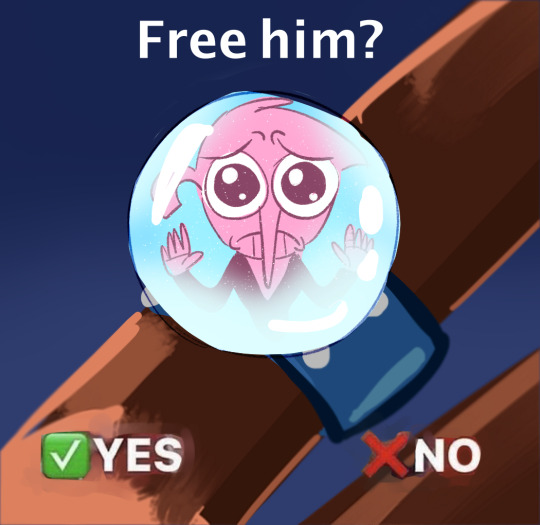Nyeh heh heh! You have fallen into my trap! Well, while you're here, feel free to strike up a conversation!
Don't wanna be here? Send us removal request.
Video
tumblr
making this was the funnest thing in my entire life youtube link in reblog
27K notes
·
View notes
Photo
I wish we could’ve talked to em now :(



desperate losers
Alright get ready for some fanfic, people:
Keep reading
3K notes
·
View notes
Photo



NEO Addisons
i wanna smack them against eachother like a kid playing with transformers figurines
3K notes
·
View notes
Photo




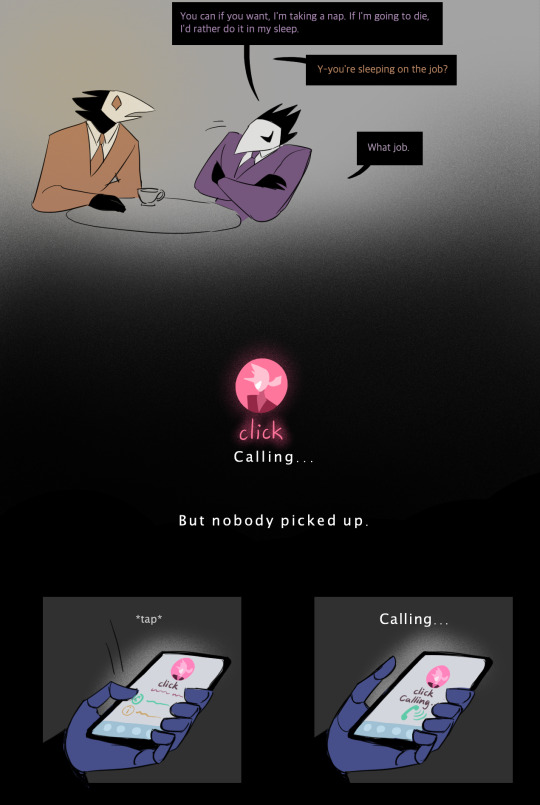





That Snowgrave Comic Part 2
Part 1 here: https://brightgoat.tumblr.com/post/667984636286222336/did-the-snowgrave-route-made-a-little-comic
3K notes
·
View notes
Photo
I love them



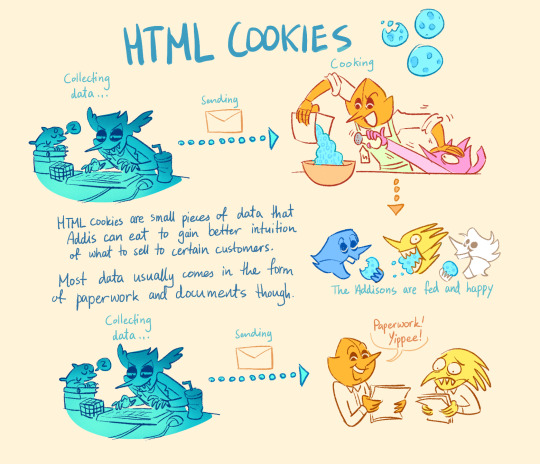


My little handbook of Addison headcanons and ideas
To be continued maybe…?
3K notes
·
View notes
Photo
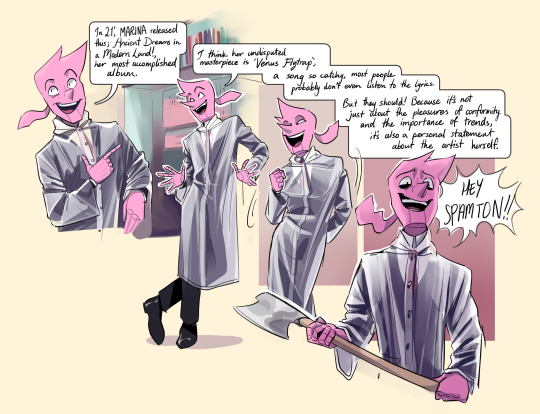

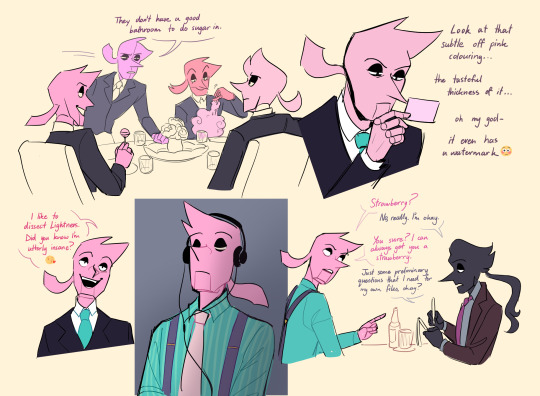



American Psycho AU
Thank you to @pukeseven for helping with dialogue. Link, green Addi, belongs to @pukeseven Iris, dark purple Addi, belongs to @/VINCEPTION on Twitter
What is actually happening is Click is slowly dying inside the Freezering, his body goes into a coma and his memories and final emotions make him experience these hallucinations, thinking he’s an 80s yuppie, until he finally goes braindead
2K notes
·
View notes
Note
Fuck this one hurt
A fun discovery I made while researching Snowgrave for my AU: There's still an Addison in Castle Town post-Snowgrave. And it's Blue. Still got the Spammequin dressed in Ralsei's clothes, doesn't say anything different, but really makes ya wonder... *why did they still come?*
For my snowgrave comic I just imagined it could be a different blue addison but here have my take on it:


2K notes
·
View notes
Text
I find it funny whenever people abbreviate non-binary as nb because "nb" is the shorthand notation I use in sheet music to remind myself not to take a breath in certain places, otherwise it ruins the flow between two notes.
So whenever I see someone use nb I'm just like, "Ah yes, the breathless ones."
11 notes
·
View notes
Text
Awww love the detail that Hero and Aubrey are automatically worried, Kel calmly comforts Sunny, and Basil starts happily tearing up too because he probably knows exactly how Sunny feels.

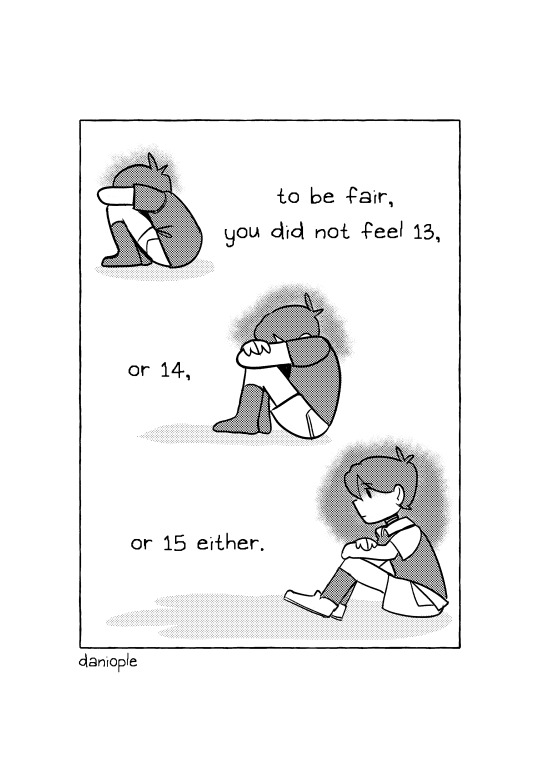
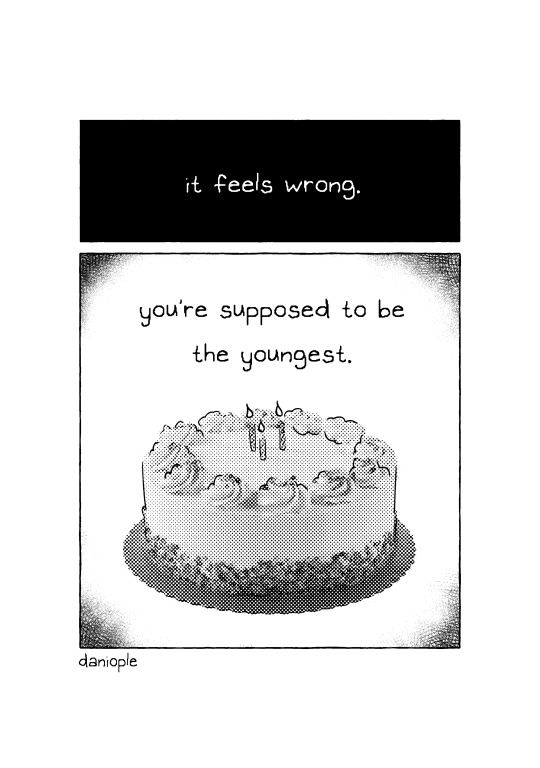
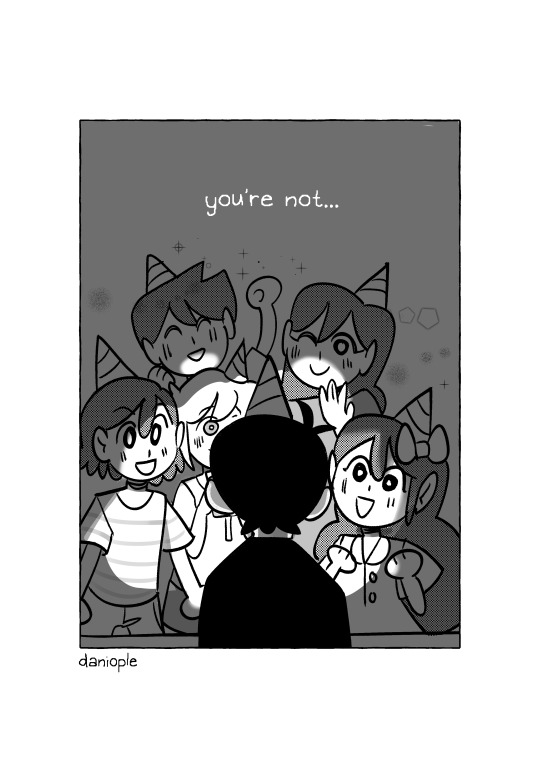


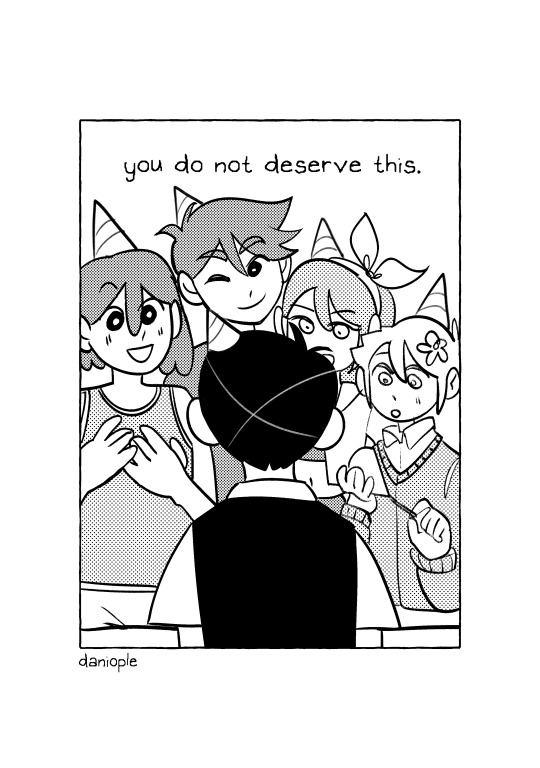


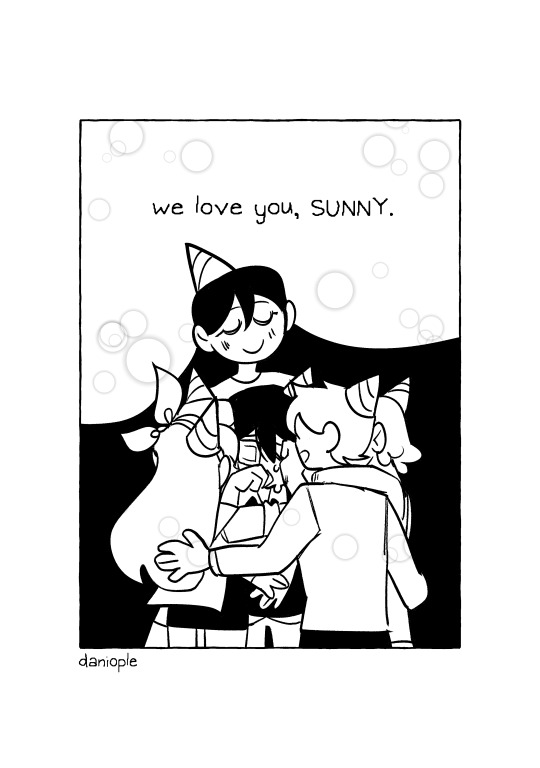
so much more than you know.
9K notes
·
View notes
Text
Omg the fact that Mari can't get mad because the last time she got was when she pushed Sunny- that's horrible I love it.

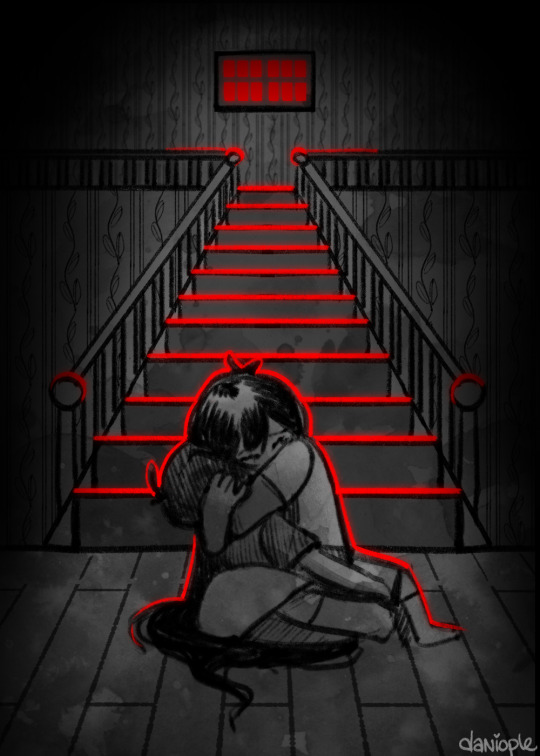

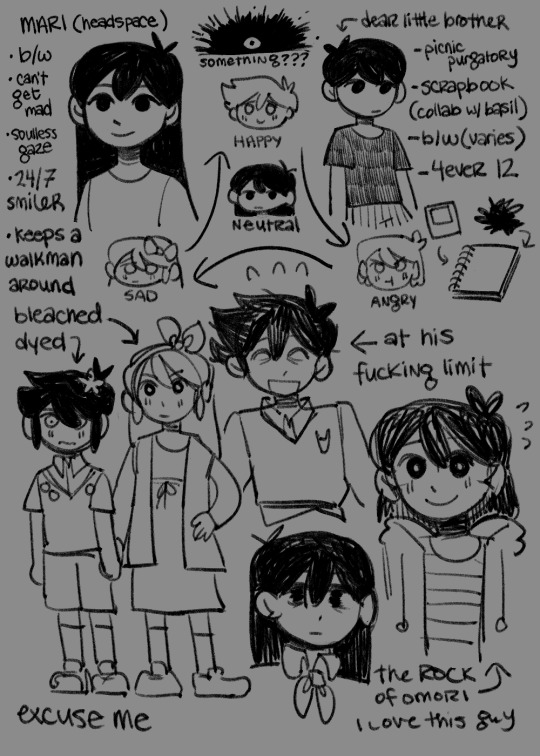
slowly but surely developing my personal omari au (@omoriaskmari)
2K notes
·
View notes
Text
I want a ghost hunter horror movie, except the main characters are just a bunch of nerds whose ghost hunting equipment doesn't work in the slightest. Cue them realizing they're completely helpless against even detecting ghosts and that everything they know about ghosts is a lie, all while being attacked from the great beyond and trapped in the mansion.
0 notes
Text
Writing prompt:
An average cashier has to regularly deal with a Karen who nitpicks his every mistake. Said cashier starts to pick up on the fact that the Karen only comes to his counter when it's his shift, and after attempting to make conversation and get to know her he finds out she's actually a tsundere.
36 notes
·
View notes
Text
Once Upon a Time Analysis- Part 3: The Undertale
If you don't know what I'm talking about in this post, please refer to my previous post where I explain my theory on Once Upon a Time.
In this post I'll look closely at the song Undertale and especially how the different parts and uses of Once Upon a Time represent the story it tells.
The Undertale starts off with with His Theme, and at 36 seconds in it adds in O1 as the main melody. This likely represents when Chara falls underground and the two meet for the first time. O1 plays for the majority of the song, but this first use only plays until 2:45. The entire time O1 is played by piano. As a whole this first section will actually loop as long as you stay in Asgore's house, and the moment you leave the next section plays, so keeping O1 here was deliberate. Fittingly, the only parts of the lore you get while in Asgore's home is that Chara fell underground and was taken in by the Dreemurr family. O1 is just the beginning of the story, the set up. At 1:31 there is a small transition before the song continues like before except other instruments start getting added in. This might represent Chara getting adopted by Toriel and Asgore. The new instruments that start getting added in might represent the underground's hope over this new child. (The actual quote from the game is "The Underground was full of hope.")
Now in the game all the sections from here on are never independently triggered; you can just sit there and let the song play out, but I don't believe it loops either. There isn't anything to interact with for the rest of New Home however, and you can't skip through the dialogue, so it's likely intended for you just to go through this area with the song being timed to the sections. For all intensive purposes we'll say that the parts of Undertale that are playing from here on correspond to the part of the story you're being told.
The second section of Undertale is shorter, and begins playing the moment you leave Asgore's house. It spans from 2:46 to 3:26, and only consists of a flute playing O2. After it plays O2 once, it repeats and is accompanied by other flutes. The use of O2, and on such a simple and solemn way is very fitting. Here we learn of Chara's death, and at this point we think it's caused by a disease. It's just a straight-up tragedy.
Then with a cymbal build up the third section comes in, using O1 and His Theme again just like before, but with more intensity. It spans from 3:26 to 4:42. This is when Asriel takes Chara's soul, and O1 and His Theme represent their reunion. Keep in mind, at this point we have no knowledge of their plan. We just see it as Asriel and Chara being reunited. At 4:04 along with O1, the piano will begin to subtley weave in O2 as well. This is pretty well timed to the part of the story where the humans see Asriel, and attack him. O2 coming in marks when everything begins to go downhill.
For the next section O1 will actually drop out, leaving His Theme playing by itself from 4:42 to 5:19. This is when Asriel refuses to fight, and when he is killed. We find out from Asriel in the Pacifist epilogue that he had to work against Chara to stop them from fighting, this is his betrayal. His Theme playing alone represents how the two are once again separated by their death. At 4:52 and 5:10 the piano that had been playing a bass harmony will play a tune that is eerily similar to Bergentrückung. While this could be coincidence, it is timed pretty well to when Asriel arrives back underground and collapses into dust. This subtle bit of piano could represent Toriel and Asgore's anguish, which pushed him to declare war on humanity.
This fits well with the next part, spanning from 5:21 to 5:57. O1 suddenly bursts back in, and the song changes key, moving up with this wave of energy, of hope! And what part of the story do you learn here? This is when Asgore declares war. This is when the entire Underground is given hope that they will be free. The monsters break off from their story and begin talking about how Asgore will free them with Frisk's soul. The key change shows this hope, and while it may seem like the end of the Undertale, O1 marks the beginning of Frisk's story, of how despite Chara's and Asriel's deaths, they still started this hope, and that hope still remains. However... from the start of this section you can hear that same piano part playing O2 weaved throughout, because while it may have given monsters hope, Asgore declaring war was still a poor decision, and we see very quickly how much he regrets it, how unwilling he is to kill Frisk. It's a subtle hint that this isn't the right way.
As the song reaches 5:58, O1 and all of the other instruments fade out, leaving His Theme to play by itself, now in a new key, filled with hope itself. It's when we hear those fateful words. "You should be smiling, too. Aren't you excited? Aren't you happy?"
Whether you choose to fight or to spare, there's only one thing monsterkind is thinking about. It's something only you and Asriel can give to them.
"You're going to be free."
The story of the Undertale ends there, but as the beginning motif O1 and His Theme fade off, they show there's much more of the story left. The ending must be decided by you, and now you must be judged.
8 notes
·
View notes
Text
Once Upon A Time Analysis- Part 2
in part one, I referred to Once Upon a Time's parts as one motif, and talked about its relation to Chara. In this post I'll actually talk about its separate parts, and focus on how they relate to the plot.
The theme Once Upon a Time actually has three parts. The first plays while showing the history of the monster human war in the opening cutscene, the second plays while showing Chara climb the mountain and enter the cave, and the third plays while showing Chara falling into the underground and ends the song. It's pretty easy to recognize the separate parts. For the sake of convenience, I'll be referring to these parts as O1, O2, and O3 respectively.
Small disclaimer, this post will be highly speculative. It was hard to get much solid evidence for this. I do believe I have a general idea of what was intended. I just hope there is a pattern and Toby didn't use the different parts where they were because they sounded good because if so then I look like a moron.
Anyways, theory time. This whole thing started with people making connections between Once Upon a Time being the first song in the Undertale OST, and Goodnight being the last song. People made jokes that Undertale was a fairy tale the whole time... but it got me thinking. The use of O3 in Beginning when Deltarune released only intrigued me more.
After some research and thinking it came to be clear to me that Once Upon a Time represents the plotline of a story, specifically the Undertale. Basically, O1 is the beginning, O2 is sort of a climax, and O3 is the ending. Though, it's not quite as simple as I first made it out to be.
Let's go back to the duality of Once Upon a Time, the beginning song, and Goodnight, the end song. Some of you may already be confused and think I'm spouting nonsense. "But if Once Upon a Time is the beginning why does it have all the motifs? And why does Goodnight use O1 if O1 represents the beginning?" I may certainly be spouting nonsense here, but I do have reasons. Once Upon a Time tells a short story in itself. O1 plays during what started it all, the story of the war, the beginning. O2 plays during once we come to 201X, where we see this "climax" of Chara climbing the mountain. Finally, O3 plays showing the aftermath of Chara having fallen into the Underground and laying on the cavern floor. This ending motif ends the intro and leads us into the main game. Now some may already point out this isn't the end of the story, as we see in Asriel's battle that Asriel actually found Chara and helped them, and there's much more that happened than us just starting the game from there. Now that's where the true nature of these motifs are shown, and things get more complicated.
You see Undertale's intro is very misleading. It makes you think that the war was simply a big war between the monsters and humans, but you find out later that it was much closer to an unprompted slaughter by the humans. Most think that Frisk wakes up and we can start the game right after seeing the human fall down in the intro, when it's later revealed to actually be Chara who fell long ago. Just like the intro is misleading, the motifs can reflect that. O3 is a repeating pattern, and in the intro it trails off. It can reflect how this is only the end of the story that we're currently being shown, and that there's really much more that will happen. The trailing off could represent an "end of the beginning" sort of thing. Meanwhile O2 more often than not emphasizes low and sad points in the story, like metaphorical "falls", rather than just the climax. If we look back at the intro, O2 plays while Chara climbs the mountain, and falls into it. While this could be considered a climax like I said before, it makes more sense to be a fall. Not to mention, Chara was probably at a pretty low point in their life right before they ran away and fell into the mountain.
Even more important is O1's use in Goodnight. I theorize, since O1 is supposed to represent the beginning, that its use here represents the irony of the pacifist ending in Undertale. You can easily just reset and play the game again, starting everything over. Undertale is a very meta game, and Flowey will even talk to you about resetting in the Pacifist ending. It's possible O1's use in Goodnight acknowledges that this is never really the end, as there's always the possibility to reset.
Now that I've wrapped up Once Upon a Time and Goodnight, the two endpoints of the plot, I'll go through the other songs that may use Once Upon a Time in this way as well.
Start Menu is hard at the very beginning of the game, which is why O1 would be used. It gradually progresses, carrying O1 with it as it adds more instruments with every monster you befriend. Finally, at the end of the Pacifist route, it adds in O3, which represents how it's the end of your journey.
Home and Home (Music Box) uses O1 as a calming motif to show how you're still at the beginning of your adventure through the underground. It also helps with Toriel's house feeling homely, as your home is where you start your day. Even so, O2 comes in to hint at the tragedy that has happened at this home. It pairs with the traces of the other children that you can find in the room Toriel gave you. It's a bittersweet feeling showing how the previous six humans all fell and had to leave Toriel, eventually dying to Asgore. However, it never uses O3. I believe this to be a subtle hint that the game is telling you it isn't the end, and that you shouldn't stay with Toriel. Like O2 suggests, you have to follow the fallen children and leave her. This is reinforced by how if you go upstairs and sleep before the Toriel fight, Chara will share a memory with you to encourage you to "stay determined" and keep going.
There's the big skip until Hotel and CYRCTHIDRMMPA, which both use O1 and O2. I think the best explanation/theory is in my previous post, in that it pokes fun at the serioussness of the tragedy of Asriel and Chara. But again, O2 is used to show that is still was a tragedy, even in elevator music form.
Later O2 is used in It's Raining Somewhere Else. This could somewhat reflects how you're nearing the climax of the story, as the CORE is the last main area. However, it more likely reflects again, the fallen humans. How horrible it must have been for Toriel to see them leave and to die. The realizing that the story Sans is telling you reveals how much she cared for them and how she cared for you so much she'd ask someone to promise her to protect you. Poor Toriel has gonna through so much and must be worried sick, O2 helps show that.
Now, the Undertale. This whole sequence is a story in itself. While the use of Once Upon a Time is to mainly refer to Chara, how all three of its parts are used are reflected in the story. I'm actually going to go much more in depth into how Once Upon a Time's parts represent the story in New Home, but I will save it for the next and last Once Upon a Time post. For a basic summary though, O1 represents the beginning of the story and then it leading into Undertale, and O2 represents the fall of Chara.
I won't talk much about O1's use in The Choice, since again The Choice is just a section of Undertale with effects layered over it, and The Choice plays in a multitude of places. Though, you could argue how O1 represents how your choice will affect things later, even if that's a bit of a stretch.
Next we move to Fallen Down (Reprise). All three parts are used here, and I believe it represents your entire journey to get here, from beginning to end. Having your friends all meet at the end of the game is a direct result of your pacifist actions to get them here, so it's sort of a little pat on the back for getting this far.
Now Hopes and Dreams. This song, while it uses O1 and O3, never actually uses O2. Odd right? All the monsters you worked so hard to befriend are now trapped in Asriel, who is now all powerful and you have no chance of beating. It's the climatic last stand final battle, where all the odds are against you, shouldn't the motif that represents that be there? Well not exactly. Let's compare this battle to one with a very similar situation, Omega Flowey. Omega Flowey's battle has a consistent theme of hopelessness. You're facing an almost-god, you have no chance! Flowey's attacks swarm you and every time you die he makes fun of you and the fact that you're all alone. Your attacks barely do any damage. Terrifying music plays and the battle is filled with so much chaos and despair. That's why, when the humans souls break free from Flowey and help you it's so impactful. In Asriel's battle, he's even more powerful, but there's not that feeling of hopelessness. Before the battle all your friends are supporting you, you don't feel as alone in the battle. When you die instead of getting a cruel joke from Flowey and your game crashing, Frisk literally refuses to die. You get hopes and dreams as healing items. Hell, the name of the song is Hopes and Dreams! You're constantly supported and encouraged to keep going. There's no sense of hopelessness, you actually feel like you can win this battle. Everyone is counting on you. Flavor text in the battle even tells you, "It's the end." which is why O3 is used so much. As for O1, why would it be used? If it's the end, why would the motif that represents the beginning be here? Well, I believe it represents that while this is the final battle, Asriel is still thinking in the past. He is still holding onto the foolish idea that you must be Chara, and he can still keep you around to stay with him.
These same things apply to SAVE the World, though it's possible that with how O1 is modified it might also represent your journey that led you to befriend everyone that is now helping you, and how it's coming full circle.
With Reunited, which uses all three, it's probably very similar to Fallen Down (Reprise), where it represents your entire journey to get here.
Bring It In, Guys! using O1 at the end really doesn't need much explanation. It's already a compilation of a bunch of the game's songs, why not end it off with the starting motif? Also from the previous post, it shows a colored version of the view of Mt. Ebott from the intro, where Once Upon a Time plays, so there's that.
Last Goodbye is pretty much a remix of SAVE the World, though it does include O2 in the beginning. This may be because it's, well the Last Goodbye, goodbyes are sad you know? You finished the game and not you can't play it for the first time again. Awesome as it is it's still a farewell song, but it doesn't spend much time on it and gets straight to partying.
We've already talked about Goodnight, so I'll move onto Deltarune songs! Before the Story was actually first used in the menu screen on PS4, and considering it's literally called *Before* the Story, it makes sense that it uses O1.
Beginning had such a nice nostalgia throwback using O3. It's possible that it's just using O3 like Undertale's into, leading to what's to come, "the end of the beginning" of sorts.
We don't get any instances of Once Upon a Time until You can Always Come Home, which is a remix of Home. The use of O1 is because it's Home, but notice how O2 is missing, replaced by Don't Forget. O3 also appears at the end with some flutes on top of Don't Forget. The reason O2 is gone is probably just because Don't Forget fit better, but may also be because this time you get to stay with Toriel, as well as the fact as far as we know there's no dead children that used to live here. And O3 would just be because it's the end of the chapter, and you finally get to come home and end the day.
Finally we have Dog Check, the song that plays on Deltarune's error screen. It usesO2 briefly, before leading into Don't Forget. In all seriousness I doubt Toby was thinking about how these parts would reflect the story, and just wanted to make a chill song using the motifs. But if you really want an explanation, O2 represents the depressed player that with a corrupt game that's giving them an error screen, and now had to figure out why Deltarune won't start. Yup that seems good.
And that's all the songs that use Once Upon a Time. Again I may be completely wrong, but I noticed some patterns and made some theories I wanted to share on this. Make of it what you will. Next post I will go more in-depth into the song Undertale, then we're done with Once Upon a Time.
5 notes
·
View notes
Text
Once Upon A Time Analysis- Part 1
So, there is a lot of controversy over Once Upon a Time. Of course, it's not as much as Megalovania, but while most agree it's the main theme not many can agree who it's for and how exactly it's used. In this 3 post series I'll explain my theories on the Once Upon a Time motif.
Once Upon a Time is the main motif of Undertale (used in 18 songs in the OST!) and is used 4 times in Deltarune. Technically this counts as three motifs, which are the three separate parts of Once Upon a Time. I'll discuss these parts in the next post, but this one will discuss the song as a whole and who it relates to.
So whose motif is Once Upon a Time? I've seen many who believe it's Frisk's theme, and while there's plenty of reason to believe this, I don't believe this is the case. Once Upon a Time is Chara's theme. I've probably already lost some Megalocharas and people who thinks other motifs are Chara's, but let me explain. You're allowed to associate whatever motifs you want, if you have good reason. Megalovania has some good evidence to be related to Chara (and there's good reasoning for it being related to Sans). Meanwhile Megalo Strike Back doesn't really have any good reasons to me, as it is not part of the game, but even so in some cases it's been fitting. Either way, let's ignore what personal reason you have to associate certain motifs with Chara. While there's no official confirmation, there's plenty of evidence to support Once Upon a Time having significant relation to them.
Many people believe the motif is Frisk's theme primarily because of its first use in the intro of the game, as it plays while showing Frisk falling underground. What these people don't realize is, as shown by the memories during Asriel's battle, the intro is actually showing Chara falling underground. So, it would make sense that it is Chara's theme.
It is also used in Start Menu, a menu which appears to be Chara's as it uses their name. Same deal with Menu (Full).
It's used in Home (and the music box version), which plays in Toriel's home in the Ruins. Chara likely lived here for some time, and will even encourage you to keep going if you sleep before the Toriel fight.
There's a big skip until the motif, seemingly out of place, plays during Mettaton's cooking show in Hotel and its remix Can You Really Call This a Hotel I Didn't Receive a Mint on My Pillow or Anything (CYRCTHIDRMMPA) This seems pretty out of place, right? I do have an idea of what the reason could be (other than Toby wanted to make an elevator remix of the main theme just because he can). In MTT Resort, where Hotel plays as the area theme, there is a fountain in the middle of the lobby. Interacting with it will tell you it is the Royal Memorial Fountain, hinted to be built as a memorial to the deaths of Chara and Asriel. Despite this, there is a statue of Mettaton built on it, which was built a week before the events of Undertale. Just like this statue pokes fun at the story of the royal children by having Mettaton plaster his face on it, the Hotel theme could be using Once Upon a Time as a cheesy hotel theme, (and by extension CYRCTHIDRMMPA as well) to show the goofy and religious change. It's a bit of a stretch, but it lines up in my opinion.
The motif is used for a small bit in It's Raining Somewhere Else. There could be multiple reasons why it's there, none of which directly relate to Chara. Sans is talking about Toriel, and perhaps the motif can be used to represent how Toriel cares for Frisk like she did for Chara. It could be simply because this song takes place in the Hotel, which already uses the theme. It could be more plot related, which again I'll talk about in the next post. Regardless, Sans likely isn't thinking about Chara during this conversation, so let's move on.
Next is the song Undertale, which is some of the most conclusive evidence. This song, despite being 6 minutes and the longest in the OST, primarily uses two motifs: Once Upon a Time and His Theme. Fittingly, this plays while you're told the story of Chara and Asriel. His Theme represents Asriel, so Once Upon a Time represents Chara.
Fun fact, The Choice is just a small slowed down section of Undertale, with effects layered over it. So it does use the motif, but just because it's used in Undertale.
Once Upon a Time is now not used until a pacifist route. It's first used in Fallen Down (Reprise). There's not much to go off of here other than Chara is connected to Frisk (and has gone on the journey through the underground with them) and that Once Upon a Time is the main theme. In reality the majority of these pacifist route songs that use Once Upon a Time will be based more on how it's used related to the plot, which again I'll get to later.
However, Hopes and Dreams definitely has a good reason. Asriel here still thinks Frisk is Chara. Keeping Chara with him is his entire driving motivation. So, the theme here would reflect his devotion to keep Chara around so they can play by using Once Upon a Time. This goes for SAVE the World and Last Goodbye (since it's just a SAVE the World remix really) as well.
Reunited, again, doesn't have much relation to Chara and should be compared more to Once Upon a Time's relation to the story as a whole.
The Once Upon a Time part in Bring It In, Guys! plays while the mountain from the intro with Chara is shown (now in color), and is just a nice way to end this song compilation.
Finally, Good Night doesn't even play in game, though it does have relation to the plotline which I'll talk about in the next post.
All in all, while some arguments can be made for Frisk, it's clear to me the motif represents Chara. It could be argued the motif uses that lean towards Frisk are just because of Frisk's partnership with Chara. Or, more importantly, it's because of my theory about Once Upon of Time's second use to represent the plot, but I'll talk about this on the next post.
5 notes
·
View notes
